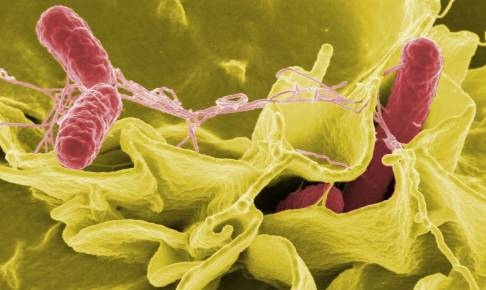A glance at zoonoses and foodborne outbreaks in Europe
Introduction
Infectious diseases originating from animal reservoirs (zoonoses) are a constant threat to public health, with effects on humans that can vary from mild to life-threatening. These infections are acquired by humans through direct contact with animals or via indirect exposure to vector-borne or environmental and food system pathogens (WHO 2020). The risks of contamination are present from farm to fork: therefore, prevention and control measures are essential all along the food chain.
The control of foodborne zoonoses within the European Union is politically important because it assures a functional internal market. The EU system for monitoring and collecting information on zoonoses in Europe is based on the Zoonoses Directive 2003/99/EC. Each EU Member State must submit an annual report where all relevant data on zoonoses, zoonotic agents, antimicrobial resistance (AMR), and foodborne outbreaks are presented. The European Food Safety Authority (EFSA) has the task of examining these data and publishing the EU Annual Summary Report in coordination with the European Centre for Disease Prevention and Control (ECDC).
The 2019 One Health Zoonoses Report (EFSA/ECDC 2021) was released at the beginning of 2021 with the latest trends and figures on the occurrence of zoonotic foodborne outbreaks in 36 European countries (28 Member States and eight non-Member States; when the UK data were collected, the UK was an EU Member State, but as of 31 January 2020, it has become a third country). The following is a selection of the information collected.
Numbers of infections
Campylobacter was the most reported zoonotic agent in humans with more than 220 000 cases, followed by Salmonella (ca. 88 000 cases), Yersinia (ca. 7 000 cases), Shiga toxin-producing Escherichia coli (STEC) (ca. 7 800 cases) and Listeria (ca. 2 600 cases) (Figure 1). Of those cases related to foodborne outbreaks, Salmonella was responsible for the largest number of cases in absolute numbers. Listeria was responsible for the smallest number of cases but Listeria is by far the most dangerous and deadly due to its high mortality. More than 47% of people infected with Listeria in 2019 were hospitalized and, of the cases with a known outcome, 17.6% died, compared to Listeria case fatality rates of 13.6% in 2018 and 15.6% in 2017.
Figure 1: Number of cases of illness, hospitalizations, and deaths related to the five most reported zoonoses in Europe in 2019. The percentages refer to the cases of illness, hospitalizations, and deaths attributed to foodborne outbreaks.
The number of cases with confirmed links to foodborne outbreaks is rather small compared to the number of total confirmed cases, ranging from 0.6% for Campylobacter to 13.3% for Listeria. Unfortunately, information about which cases are linked to outbreaks and which are not is not systematically collected. Because these infections can be transmitted to humans via contaminated food, it is fair to ask why it is not possible to associate confirmed cases with foodborne outbreaks with greater certainty and precision. One issue may be
Download content now





















